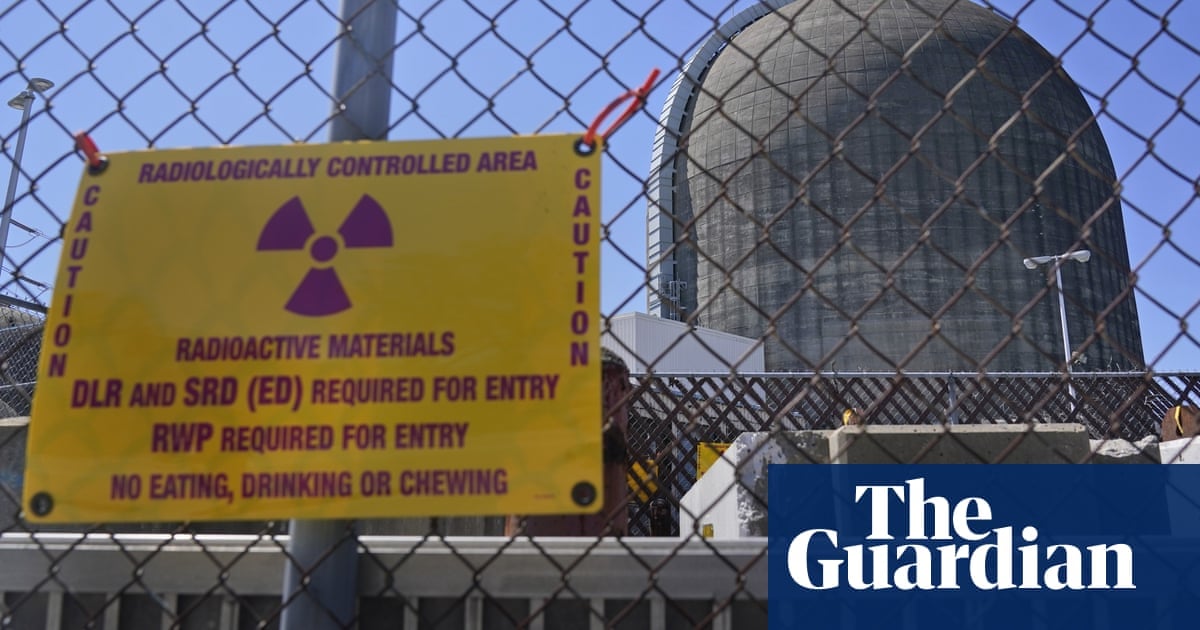Shuttering of New York facility raises awkward climate crisis questions as gas – not renewables – fills gap in power generation
When New York’s deteriorating and unloved Indian Point nuclear plant finally shuttered in 2021, its demise was met with delight from environmentalists who had long demanded it be scrapped.
But there has been a sting in the tail – since the closure, New York’s greenhouse gas emissions have gone up.
Castigated for its impact upon the surrounding environment and feared for its potential to unleash disaster close to the heart of New York City, Indian Point nevertheless supplied a large chunk of the state’s carbon-free electricity.
Since the plant’s closure, it has been gas, rather then clean energy such as solar and wind, that has filled the void, leaving New York City in the embarrassing situation of seeing its planet-heating emissions jump in recent years to the point its power grid is now dirtier than Texas’s, as well as the US average.



They are where people tend to live.
This is how you hybridize things: you line up the pros and cons of each solution, and then use the pros of one to cover the cons of another.
Wind and solar are a good example. The wind is often at a standstill when the sun is brightest, and then wind picks up when the sun is blocked. There are lulls where you have neither, but the good news is that we have plenty of data for that. We can calculate an expected maximum lull for a region, and then add enough storage to cover that plus some more for a safety factor.
Nuclear does not actually help. Its pro is a low marginal cost for sitting at 100% all the time. Its biggest con (since we’re both in agreement that nuclear can be done safely) is high up front cost. Really high. Which means you had better leave it at 100% all the time, or that up front cost isn’t going to amortize well.
What happens when added to a renewable grid is that you hit an opposite problem: the sun is shining and the wind is blowing, and combined with nuclear baseload, you now have too much (which causes other problems on the grid). Now you need to do one of three things:
The first two mean economic waste. The third one means you still need storage–but then, why not forget nuclear entirely and use that money to build more storage? And keep in mind, nuclear is expensive as fuck to build. That money can go into a lot of storage.
This winter my home city had a power supply crisis. It was night time (I live in a high latitude so nights last a long time during winter) which meant no solar, and it was -30C, which meant the wind turbines all shut down (they can’t operate when it’s below -30C). The whole province was short of power, only the coal and natural gas plants were keeping the lights on. We dodged rolling blackouts but it was a close thing. Lots of people live here.
Which is perfectly fine. Nuclear power plants can change how much power they’re putting out. It’s not “economic waste”, the term is “load-following power plant” and it’s routine for nuclear power plants.
You’re right that cold winters in northern latitudes present additional system constraints. But that doesn’t mean the renewables + storage strategy is flawed, it means we need more transmission and more storage, and gas backup will linger longer in such areas than it does in warmer areas. We’re still early in the transition and have a ton of low hanging fruit to capture before we need to really focus on the remaining 20%.